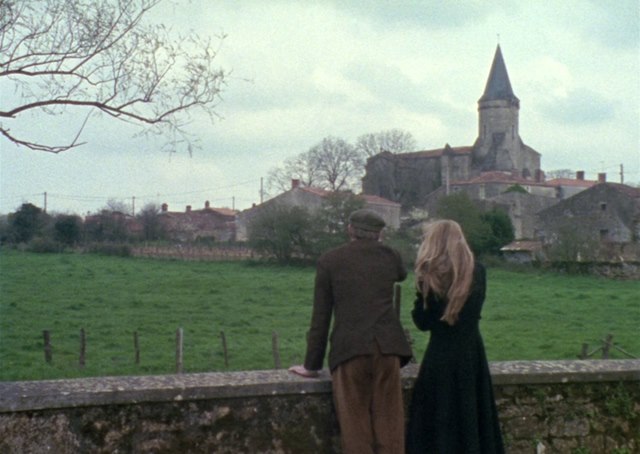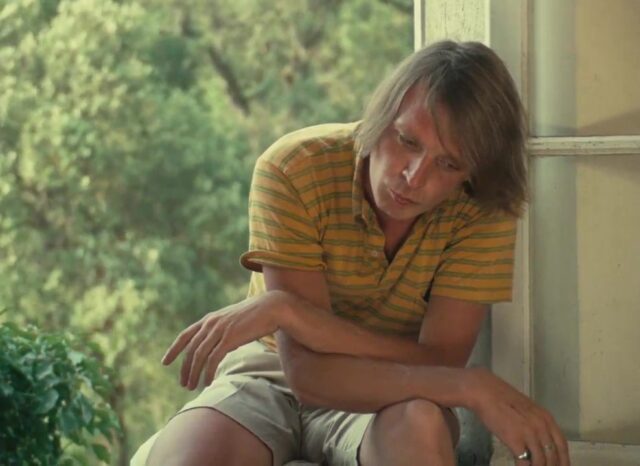
The film career of French artist Daniel Pommereulle is being celebrated at Metrograph this month
SIX MORAL TALES: LA COLLECTIONNEUSE (Eric Rohmer, 1967)
Metrograph
7 Ludlow St. between Canal & Hester Sts.
Saturday, September 14, 2:30
Sunday, September 15, 11:00 am
Series runs September 13-29
212-660-0312
metrograph.com
On September 12, the exhibit “Daniel Pommereulle: Premonition Objects” opens at Ramiken on Grand St. On September 13, Metrograph kicks off the two-week series “One More Time: The Cinema of Daniel Pommereulle,” consisting of seven programs featuring the French painter, sculptor, filmmaker, performer, and poet who died in 2003 at the age of sixty-six. First up is “Daniel Pommereulle X3,” bringing together Pommereulle’s shorts One More Time and Vite and Anton Bialas and Ferdinand Gouzon’s 2021 Monuments aux vivants, which documents the artist’s sculptural work; curators Boris Bergmann and Armance Léger will take part in a postscreening Q&A moderated by filmmaker Kathy Brew. “Pommereulle was one of those people who could stand firm against the all-consuming metropolis: someone who never compromised, who never sold his soul — even to America. We joyously return Pommereulle to New York: a necessary encounter, a poetic reward,” Léger and Bergmann said in a statement. The festival also includes Jean-Luc Godard’s Weekend, Jean Eustache’s The Mother and the Whore, Marc’O’s Les Idoles, Jackie Raynal’s Deux Fois, serge Bard and Olivier Mosset’s Ici et maintenant and Fun and Games for Everyone, and Eric Rohmer’s La Collectionneuse.
“Razor blades are words,” art critic Alain Jouffroy tells painter Daniel Pommereulle (Daniel Pommereulle) in one of the prologues at the start of La Collectionneuse, the fourth film in French master Eric Rohmer’s Six Moral Tales (falling between My Night at Maud’s and Claire’s Knee). Words might have the ability to cut, but they don’t seem to have much impact on the three people at the center of the film, which offers a sort of alternate take on François Truffaut’s Jules et Jim. Needing a break from his supposedly strenuous life, gallerist Adrien (Patrick Bauchau, who also appeared in La Carrière de Suzanne, Rohmer’s second morality tale) decides to vacation at the isolated St. Tropez summer home of the never-seen Rodolphe. Daniel is also at the house, along with Haydée (Haydée Politoff), a beautiful young woman who spends much of the film in a bikini and being taken out by a different guy nearly every night. Adrien decides that she is a “collector” of men, and the three needle one another as they discuss life and love, sex and morality, beauty and ugliness. Adrien might claim to want to have nothing to do with Haydée, but he keeps spending more and more time with her, even though he never stops criticizing her lifestyle. He even uses her as a pawn when trying to get an art collector named Sam (played by former New York Times film critic Eugene Archer under the pseudonym Seymour Hertzberg) to invest in his gallery.
While everybody else in the film pretty much knows what they want, Adrien, who purports to understand life better than all of them, is a sad, lost soul, unable to get past his high-and-mighty attitude. Rohmer crafted the roles of Daniel and Haydée specifically for Pommereulle and Politoff, who improvised much of their dialogue; Bauchau opted not to take that route, making for a fascinating relationship among the three very different people. La Collectionneuse is beautifully shot in 35mm by Néstor Almendros, the bright colors of the characters’ clothing mixing splendidly with the countryside and ocean while offering a striking visual counterpoint to the constant ennui dripping off the screen. His camera especially loves Politoff, regularly exploring her body inch by inch. The film is both Rohmer’s and Almendros’s first color feature; Almendros would go on to make more films with the director, as well as with Truffaut, even after coming to Hollywood and shooting such films as Days of Heaven, Kramer vs. Kramer, and Sophie’s Choice. Winner of a Silver Bear Extraordinary Jury Prize at the 1967 Berlinale, La Collectionneuse is screening September 14 and 15 at Metrograph.
[Mark Rifkin is a Brooklyn-born, Manhattan-based writer and editor; you can follow him on Substack here.]
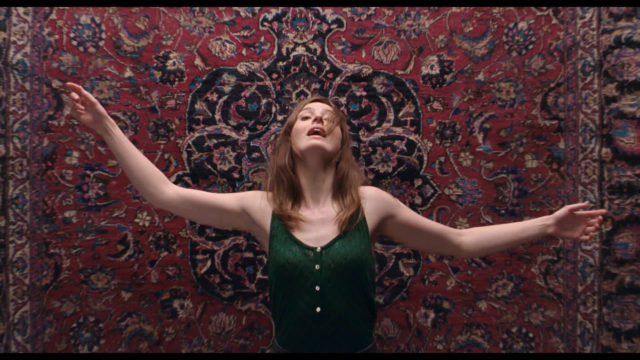
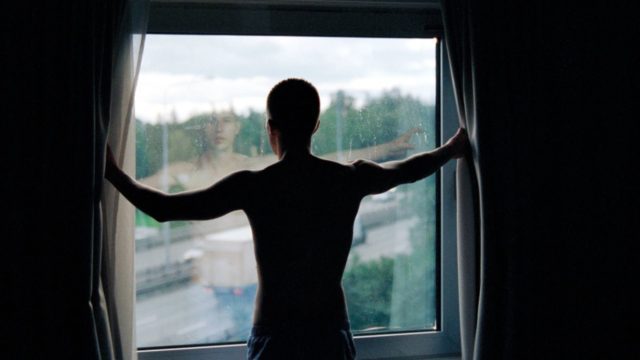

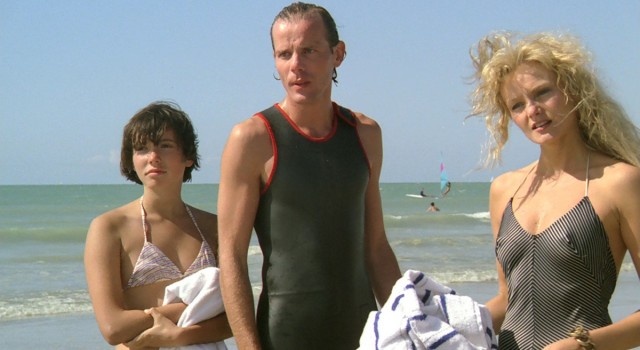
 “Love’s a form of insanity,” Pauline (Amanda Langlet) says in Éric Rohmer’s modern French classic, 1983’s Pauline at the Beach. The fifteen-year-old virgin turns out to be the most intelligent and honest character in the film, which earned Rohmer the Silver Bear for Best Director at the Berlin International Film Festival. Amanda Langlet stars as Pauline, a teenager who is spending the end of the summer on the Normandy coast with her older cousin, sexy fashion designer Marion (Arielle Dombasle). Windsurfing hottie Pierre (Pascal Greggory) wants to rekindle the romance that cooled off when Marion left to get married, but the now-divorced Marion lusts for Henri (Féodor Atkine), a balding, middle-aged father who is not nearly as serious about sex as Marion is. Meanwhile, Pauline and fellow teen Sylvain (Simon de La Brosse) start a cute flirtation that gets upended when Marion shows up at Henri’s beach house one afternoon to discover candy girl Louisette (Rosette) hiding in a bathroom with Sylvain. A series of lies, misunderstandings, and miscommunications — all the elements of a basic French sex farce — ensue as various characters reevaluate their relationships as well as their faith in love.
“Love’s a form of insanity,” Pauline (Amanda Langlet) says in Éric Rohmer’s modern French classic, 1983’s Pauline at the Beach. The fifteen-year-old virgin turns out to be the most intelligent and honest character in the film, which earned Rohmer the Silver Bear for Best Director at the Berlin International Film Festival. Amanda Langlet stars as Pauline, a teenager who is spending the end of the summer on the Normandy coast with her older cousin, sexy fashion designer Marion (Arielle Dombasle). Windsurfing hottie Pierre (Pascal Greggory) wants to rekindle the romance that cooled off when Marion left to get married, but the now-divorced Marion lusts for Henri (Féodor Atkine), a balding, middle-aged father who is not nearly as serious about sex as Marion is. Meanwhile, Pauline and fellow teen Sylvain (Simon de La Brosse) start a cute flirtation that gets upended when Marion shows up at Henri’s beach house one afternoon to discover candy girl Louisette (Rosette) hiding in a bathroom with Sylvain. A series of lies, misunderstandings, and miscommunications — all the elements of a basic French sex farce — ensue as various characters reevaluate their relationships as well as their faith in love.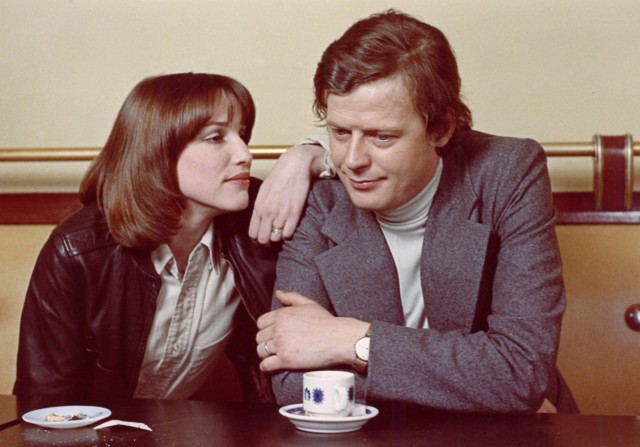
 The Film Society of Lincoln Center’s “Eric Rohmer’s Six Moral Tales” concludes with the last work in the series, the 1972 drama Love in the Afternoon, which serves not only as the chronological end but the thematic finale as well. Bernard Verley stars as Frédéric Carrelet, a nearly perfect 1970s French bourgeois character. In his mid-thirties, a partner in a two-lawyer firm, he is about to have his second child with his wife, Hélène, played by his real spouse at the time, Françoise Verley, in her only feature film. While Frédéric seems at ease with his steady suburban life, he daydreams about other women, albeit with no intention of taking action. At lunch he goes to a café, watches all the passersby outside, and thinks (in voice-over narration), “If there’s one thing I’m incapable of now, it’s trying to seduce a girl. I have no idea what to say.” However, he adds, “The prospect of quiet happiness stretching indefinitely before me depresses me.” But he also admits about women, “I feel their seductive power without giving in to it.” But when an old friend from his past, the sexy and freewheeling Chloé (Zouzou), unexpectedly arrives in his office one day and starts an unpredictable yet exciting flirtation with him, Frédéric is forced to look deep inside himself and make some choices about his life that are harder than he anticipated.
The Film Society of Lincoln Center’s “Eric Rohmer’s Six Moral Tales” concludes with the last work in the series, the 1972 drama Love in the Afternoon, which serves not only as the chronological end but the thematic finale as well. Bernard Verley stars as Frédéric Carrelet, a nearly perfect 1970s French bourgeois character. In his mid-thirties, a partner in a two-lawyer firm, he is about to have his second child with his wife, Hélène, played by his real spouse at the time, Françoise Verley, in her only feature film. While Frédéric seems at ease with his steady suburban life, he daydreams about other women, albeit with no intention of taking action. At lunch he goes to a café, watches all the passersby outside, and thinks (in voice-over narration), “If there’s one thing I’m incapable of now, it’s trying to seduce a girl. I have no idea what to say.” However, he adds, “The prospect of quiet happiness stretching indefinitely before me depresses me.” But he also admits about women, “I feel their seductive power without giving in to it.” But when an old friend from his past, the sexy and freewheeling Chloé (Zouzou), unexpectedly arrives in his office one day and starts an unpredictable yet exciting flirtation with him, Frédéric is forced to look deep inside himself and make some choices about his life that are harder than he anticipated.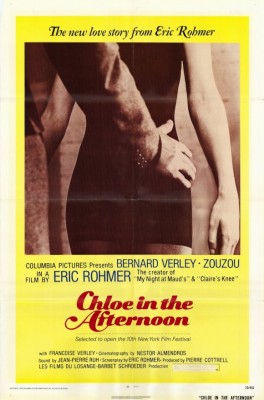
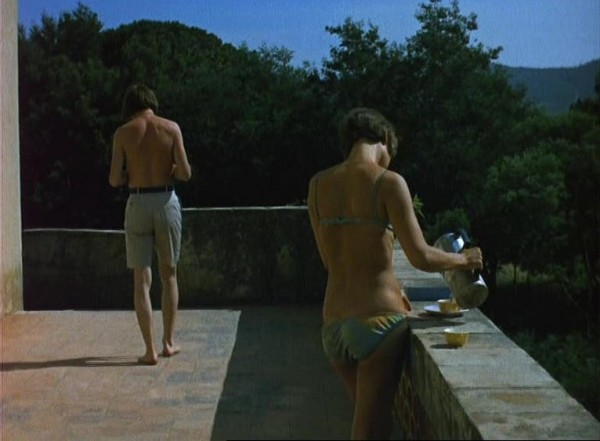
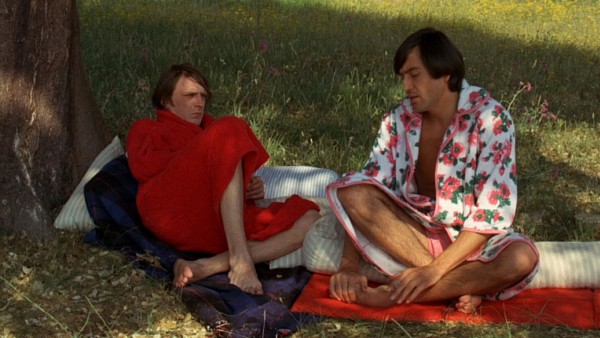
 Nominated for the Palme d’Or and a Best Foreign Language Film Oscar, My Night at Maud’s, Éric Rohmer’s fourth entry in his Six Moral Tales series (falling between La Collectionneuse and Claire’s Knee) continues the French director’s fascinating exploration of love, marriage, and tangled relationships. Three years removed from playing the romantic racecar driver Jean-Louis in Claude Lelouch’s A Man and a Woman, Jean-Louis Trintignant again stars as a man named Jean-Louis, this time a single thirty-four-year-old Michelin engineer living a relatively solitary life in the French suburb of Clermont. A devout Catholic, he is developing an obsession with a fellow churchgoer, the blonde, beautiful Françoise (Marie-Christine Barrault), about whom he knows practically nothing. After bumping into an old school friend, Vidal (Antoine Vitez), the two men delve into deep discussions of religion, Marxism, Pascal, mathematics, Jansenism, and women. Vidal then invites Jean-Louis to the home of his girlfriend, Maud (Françoise Fabian), a divorced single mother with open thoughts about sexuality, responsibility, and morality that intrigue Jean-Louis, for whom respectability and appearance are so important. The conversation turns to such topics as hypocrisy, grace, infidelity, and principles, but Maud eventually tires of such talk. “Dialectic does nothing for me,” she says shortly after explaining that she always sleeps in the nude. Later, when Jean-Louis and Maud are alone, she tells him, “You’re both a shamefaced Christian and a shamefaced Don Juan.” Soon a clearly conflicted Jean-Louis is involved in several love triangles that are far beyond his understanding, so he again seeks solace in church. My Night at Maud’s is a classic French tale, with characters spouting off philosophically while smoking cigarettes, drinking wine and other cocktails, and getting naked. Shot in black-and-white by Néstor Almendros, the film roams from midnight mass to a single woman’s bed and back to church, as Jean-Louis, played with expert concern by Trintignant, is forced to examine his own deep desires and how they relate to his spirituality. Fabian (Belle de Jour, The Letter) is outstanding as Maud, whose freedom titillates and confuses Jean-Louis. My Night at Maud’s, which is being shown September 17-18 and 24-25 as part of the Film Society of Lincoln Center’s Six Moral Tales series, is one of Rohmer’s best, most accomplished works despite its haughty intellectualism.
Nominated for the Palme d’Or and a Best Foreign Language Film Oscar, My Night at Maud’s, Éric Rohmer’s fourth entry in his Six Moral Tales series (falling between La Collectionneuse and Claire’s Knee) continues the French director’s fascinating exploration of love, marriage, and tangled relationships. Three years removed from playing the romantic racecar driver Jean-Louis in Claude Lelouch’s A Man and a Woman, Jean-Louis Trintignant again stars as a man named Jean-Louis, this time a single thirty-four-year-old Michelin engineer living a relatively solitary life in the French suburb of Clermont. A devout Catholic, he is developing an obsession with a fellow churchgoer, the blonde, beautiful Françoise (Marie-Christine Barrault), about whom he knows practically nothing. After bumping into an old school friend, Vidal (Antoine Vitez), the two men delve into deep discussions of religion, Marxism, Pascal, mathematics, Jansenism, and women. Vidal then invites Jean-Louis to the home of his girlfriend, Maud (Françoise Fabian), a divorced single mother with open thoughts about sexuality, responsibility, and morality that intrigue Jean-Louis, for whom respectability and appearance are so important. The conversation turns to such topics as hypocrisy, grace, infidelity, and principles, but Maud eventually tires of such talk. “Dialectic does nothing for me,” she says shortly after explaining that she always sleeps in the nude. Later, when Jean-Louis and Maud are alone, she tells him, “You’re both a shamefaced Christian and a shamefaced Don Juan.” Soon a clearly conflicted Jean-Louis is involved in several love triangles that are far beyond his understanding, so he again seeks solace in church. My Night at Maud’s is a classic French tale, with characters spouting off philosophically while smoking cigarettes, drinking wine and other cocktails, and getting naked. Shot in black-and-white by Néstor Almendros, the film roams from midnight mass to a single woman’s bed and back to church, as Jean-Louis, played with expert concern by Trintignant, is forced to examine his own deep desires and how they relate to his spirituality. Fabian (Belle de Jour, The Letter) is outstanding as Maud, whose freedom titillates and confuses Jean-Louis. My Night at Maud’s, which is being shown September 17-18 and 24-25 as part of the Film Society of Lincoln Center’s Six Moral Tales series, is one of Rohmer’s best, most accomplished works despite its haughty intellectualism.